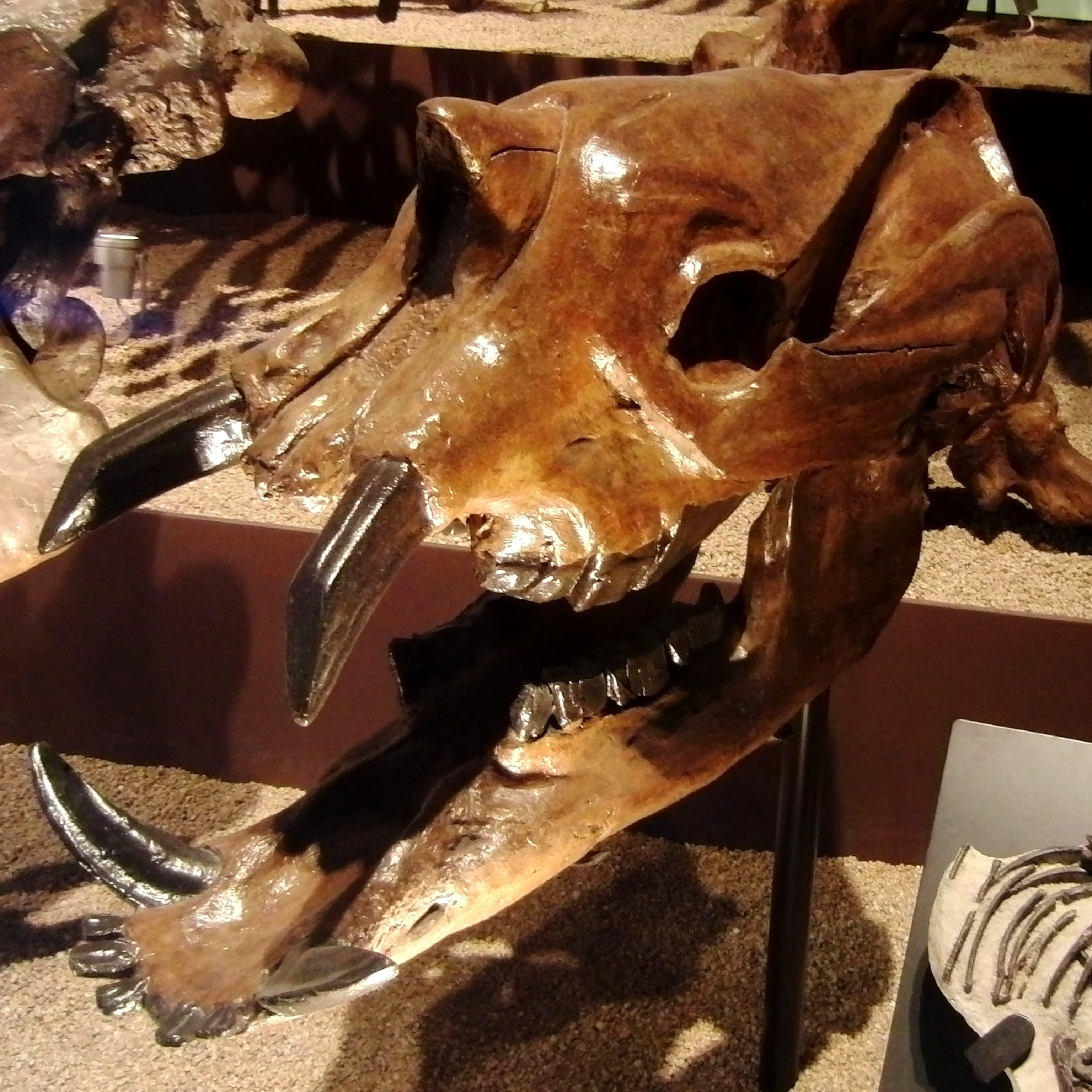Isolation is essential to evolution. Whether they’re reproductive, behavioral, or geographic, barriers are what create opportunities for species to split off into something new. And given the odd array of mammals that evolved in South America during the time of the continent’s time as an island between the end of the Cretaceous and its connection with Panama around 13 million years ago, it’s easy to comprehend why 20th century paleontologist George Gaylord Simpson deemed the landmass a case of “splendid isolation.” Among the wondrous spinoffs to come out of this time were the astrapotheres.
There isn’t a common term for what an astrapothere is. Some of them looked sort of like hippo elephants – bulky herbivores with elongated tusks and short trunks that belonged to a lineage totally unique to prehistoric South America. The first of to be recognized by paleontologists were named in the 19th century, and now paleontologist M.C. Vallejo-Pareja and coauthors have added another species to their ranks.
Named Hilarcotherium castanedaii, the beast used to roam around what is now central Colombia. As estimated by Vallejo-Pareja and colleagues, it would been over 2,800 pounds. It wasn’t the largest animal of its kind, but Hilarcotherium was still a pretty hefty herbivore and one of the many oddballs that were able to proliferate during South America’s time of disconnection from the rest of the world.

Fossil Facts
Name: Hilarcotherium castanedaii
Meaning: Hilarcotherium means “Vereda Hilarco beast” for the area of Colombia where the fossils were found, while castanedaii honors the mammal’s discoverer José Alfredo Castañeda.
Age: Between 16 and 11 million years old.
Where in the world?: Magdalena Valley, Colombia.
What sort of critter?: An herbivorous mammal belonging to a strange, superficially elephant-like lineage called astrapotheres.
Size: About the size of a black rhinoceros.
How much of the creature’s body is known?: A partial skull and lower jaw with some teeth, a left humerus, and part of a rib.
Reference:
Vallejo-Pareka, M., Carrillo, J., Moreno-Bernal, J., Pardo-Jaramillo, M., Rodriguez-Gonzalez, D., Muñoz-Duran, J. 2015. Hilarcotherium castanedaii, gen. et. sp. nov., a new Miocene astrapothere (Mammalia, Astrapotheriidae) from the Upper Magdalena Valley, ColombiaHilarcotherium castanedaii, gen. et. sp. nov., a new Miocene astrapothere (Mammalia, Astrapotheriidae) from the Upper Magdalena Valley, Colombia. Journal of Vertebrate Paleontology. doi: 10.1080/02724634.2014.903960
Previous Paleo Profiles:
The Unfortunate Dragon
The Cross Lizard
The Cross Lizard
The South China Lizard
Zhenyuan Sun’s dragon
Zhenyuan Sun’s dragon
The Fascinating Scrap
The Fascinating Scrap
The Sloth Claw
The Hefty Kangaroo
Mathison’s Fox
Scar Face
The Rain-Maker Lizard
“Lightning Claw”
The Ancient Agama
The Hell-Hound
The Hell-Hound
The Cutting Shears of Kimbeto Wash
The False Moose
“Miss Piggy” the Prehistoric Turtle
Mexico’s “Bird Mimic”
The Greatest Auk
Catalonia’s Little Ape
Pakistan’s Butterfly-Faced Beast
The Head of the Devil
Spain’s Megatoothed Croc
The Smoke Hill Bird
